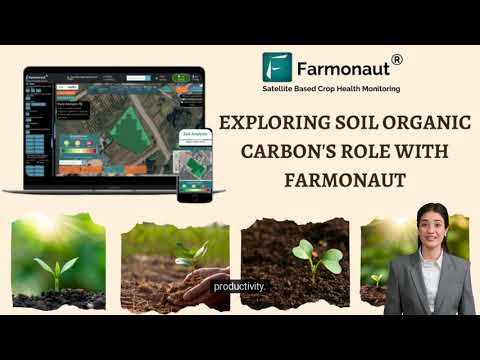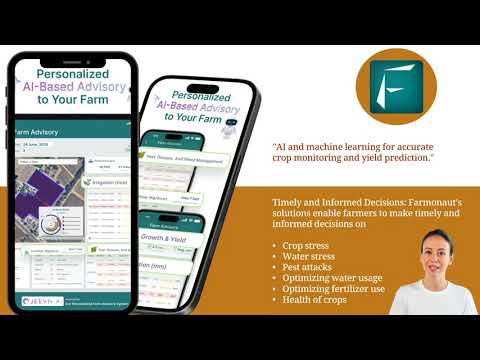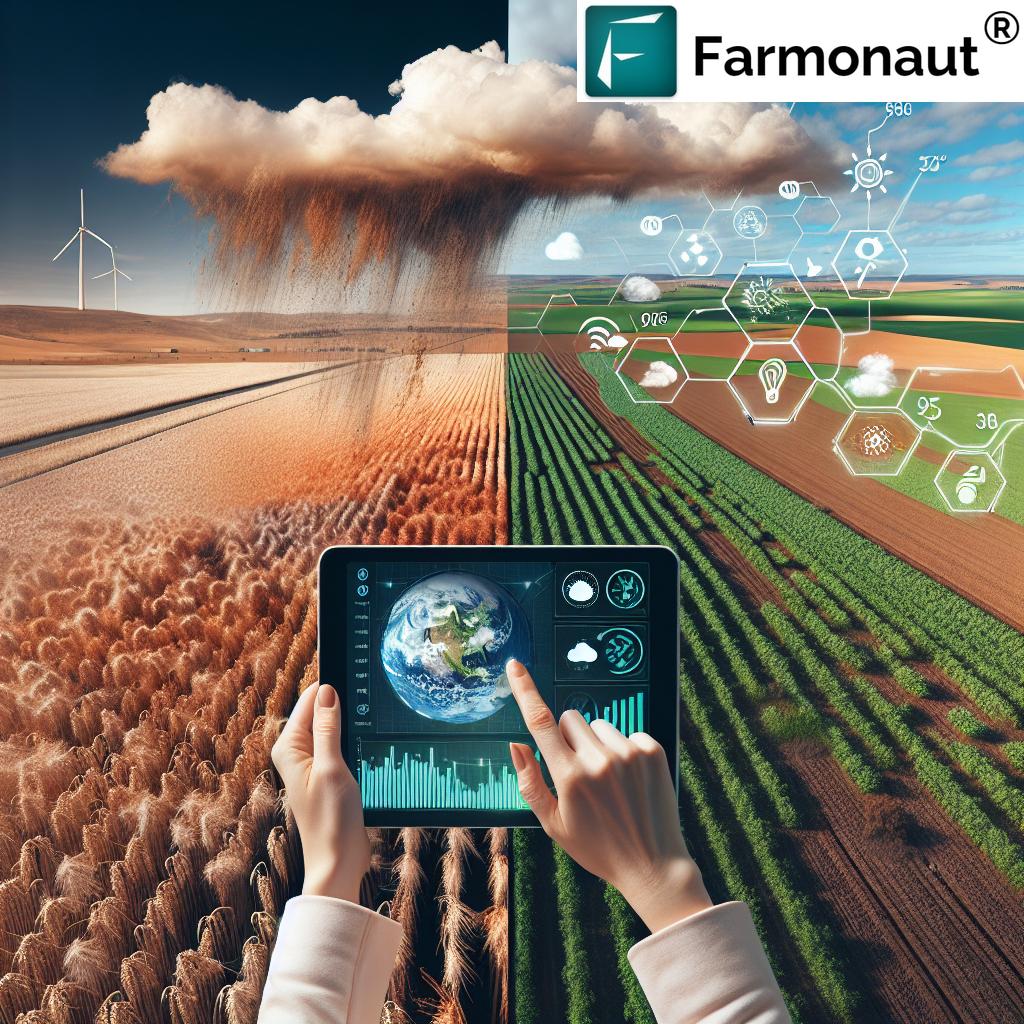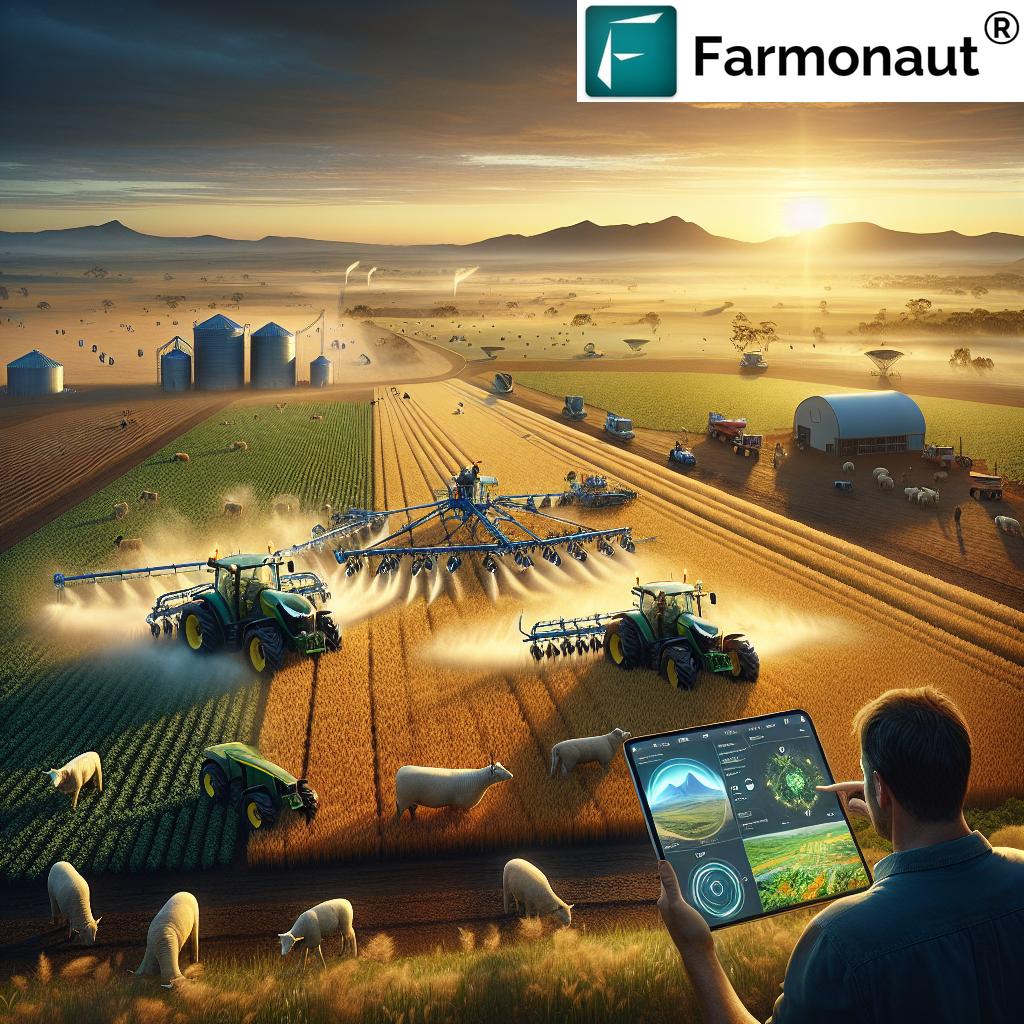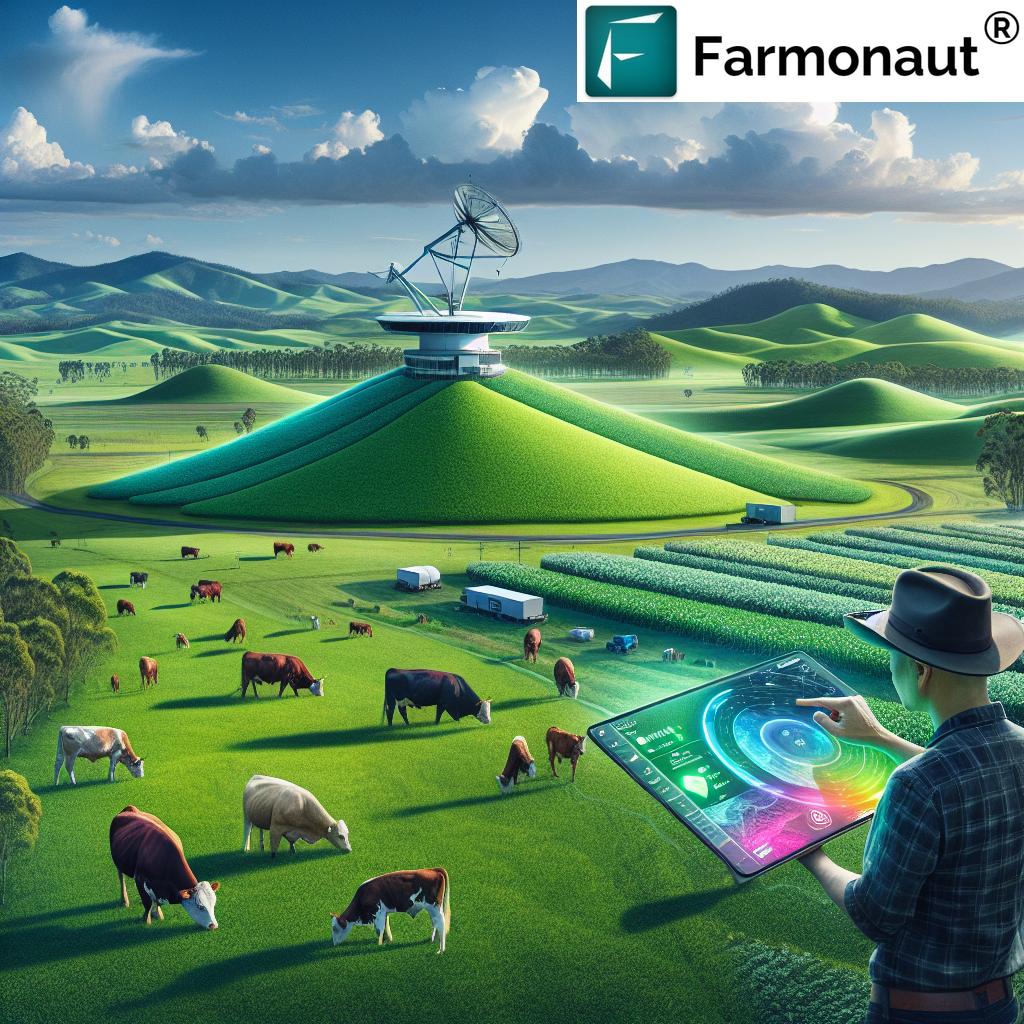Revolutionizing Australian Grazing: Farmonaut’s Data-Driven Solutions for Sustainable Farm Management
“Farmonaut’s data-driven solutions have helped increase grazing efficiency by up to 30% for Australian farmers.”
Welcome to the future of Australian grazing! We at Farmonaut are excited to share with you how our innovative, data-driven solutions are transforming the landscape of sustainable farm management. In this comprehensive guide, we’ll explore the cutting-edge technologies and strategies that are revolutionizing the way farmers approach grazing practices, enhance agricultural efficiency, and promote sustainability.
The Evolution of Grazing Practices in Australia
Australia has a rich history of grazing, with vast expanses of land dedicated to sheep and cattle farming. However, traditional methods are facing challenges in the face of climate change, resource scarcity, and the need for increased productivity. This is where data-driven grazing practices come into play, offering a beacon of hope for farmers across the country.
At Farmonaut, we believe that the integration of precision agriculture technology and farm data analytics is key to overcoming these challenges. Our platform provides farmers with the tools they need to make informed decisions, optimize their operations, and contribute to a more sustainable future for Australian agriculture.
The Power of Data in Modern Grazing
Data is the cornerstone of modern agricultural practices, and grazing is no exception. By harnessing the power of satellite imagery, artificial intelligence, and machine learning, we’re able to provide farmers with unprecedented insights into their land and livestock.
- Real-time pasture health monitoring
- Precise stocking rate calculations
- Optimal grazing rotation planning
- Early detection of potential issues
These data-driven capabilities allow farmers to make proactive decisions that lead to improved pasture utilization, better animal health, and increased profitability.
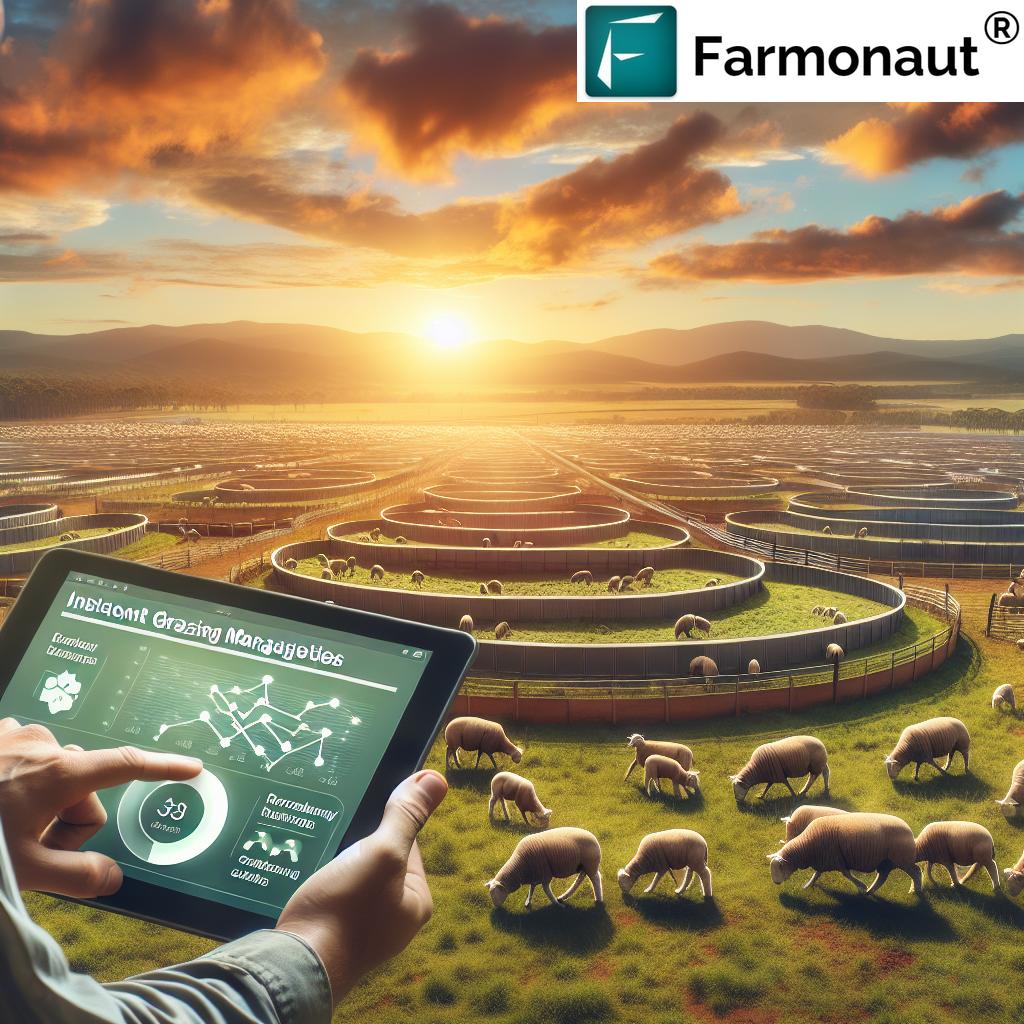
Farmonaut’s Innovative Solutions for Australian Graziers
Our suite of tools is designed to address the unique challenges faced by Australian graziers. Let’s dive into some of the key features that are making a difference on farms across the country:
1. Satellite-Based Crop Health Monitoring
Using advanced multispectral satellite imagery, we provide farmers with detailed insights into vegetation health through NDVI (Normalized Difference Vegetation Index) analysis. This allows for precise monitoring of pasture conditions, helping farmers make informed decisions about grazing patterns and stocking rates.
2. Jeevn AI Advisory System
Our AI-powered advisory tool delivers personalized recommendations based on real-time data and expert knowledge. From weather forecasts to grazing strategies, Jeevn AI helps farmers stay one step ahead in their management practices.
3. Resource Management Tools
Efficient resource allocation is crucial for sustainable grazing. Our platform offers tools for managing water resources, feed supplies, and livestock movements, ensuring optimal utilization of farm assets.
Ready to transform your grazing practices? Try Farmonaut today!
The Impact of Data-Driven Grazing on Sustainability
Sustainability is at the heart of what we do at Farmonaut. By empowering farmers with data-driven insights, we’re contributing to more sustainable farming methods that benefit both the environment and the bottom line.
“Smart farming techniques can reduce water usage in pasture management by up to 25% compared to traditional methods.”
Let’s explore some of the key sustainability benefits of data-driven grazing:
- Reduced overgrazing and soil degradation
- Improved carbon sequestration in pastures
- Enhanced biodiversity through strategic grazing patterns
- Lower water consumption through precise irrigation planning
By adopting these practices, Australian graziers are not only improving their farm’s efficiency but also contributing to the country’s environmental goals.
Optimizing Pasture Management with Farmonaut
Effective pasture management is crucial for sustainable grazing, and our pasture management software provides the insights needed to make this a reality. Here’s how our platform helps optimize pasture utilization:
- Monitoring grass growth rates and quality
- Identifying areas of under or overgrazing
- Planning rotational grazing schedules
- Predicting forage availability based on weather forecasts
By leveraging these insights, farmers can ensure their pastures remain productive year-round, supporting healthier livestock and more sustainable operations.
Enhancing Livestock Management Through Data
Our livestock management systems go beyond simply tracking numbers. We provide comprehensive tools for monitoring animal health, optimizing breeding programs, and improving overall herd productivity. Some key features include:
- Real-time tracking of livestock movements
- Health monitoring through satellite imagery and AI analysis
- Customized feeding recommendations based on pasture conditions
- Predictive analytics for optimal breeding times
These tools enable farmers to make data-driven decisions that lead to healthier, more productive livestock and improved farm profitability.

Real-World Scenarios: Data-Driven Grazing in Action
To illustrate the power of data-driven grazing, let’s explore some hypothetical scenarios that demonstrate how Farmonaut’s solutions can be applied in real-world situations:
Scenario 1: Optimizing Rotational Grazing
A sheep farmer in New South Wales uses Farmonaut’s satellite imagery to assess pasture health across their property. By analyzing NDVI data, they identify areas of high and low grass growth, allowing them to create a more effective rotational grazing plan. This results in more even pasture utilization and improved sheep health.
Scenario 2: Drought Management
During a dry spell in Queensland, a cattle grazier relies on Farmonaut’s AI-powered predictions to anticipate forage shortages. Armed with this information, they make proactive decisions about destocking and supplementary feeding, minimizing the impact of the drought on their herd and finances.
Scenario 3: Improving Soil Health
A mixed farming operation in Victoria uses our platform to monitor soil moisture levels and plan grazing intensity accordingly. By avoiding overgrazing during wet periods, they reduce soil compaction and erosion, leading to improved pasture growth and increased carbon sequestration.
These scenarios demonstrate how data-driven insights can be applied to various aspects of grazing management, from day-to-day operations to long-term planning.
The Economic Benefits of Smart Grazing Practices
Adopting data-driven grazing practices isn’t just good for the environment – it’s also a smart business decision. Let’s explore some of the economic benefits that Australian graziers can expect:
- Increased stocking rates without overgrazing
- Reduced input costs through more efficient resource use
- Higher quality livestock leading to better market prices
- Improved resilience to climate variability and market fluctuations
By leveraging Farmonaut’s tools, farmers can make informed decisions that boost their bottom line while promoting sustainable land management.
Comparing Traditional vs. Data-Driven Grazing Practices
To truly appreciate the impact of data-driven grazing, it’s helpful to compare it with traditional methods. Here’s a breakdown of key differences:
| Aspect | Traditional Grazing | Data-Driven Grazing with Farmonaut |
|---|---|---|
| Pasture Utilization | 60-70% | 80-90% |
| Livestock Health Monitoring | Weekly visual checks | Daily satellite-based monitoring |
| Environmental Impact | Moderate to high | Low to moderate |
| Decision-Making Process | Days to weeks | Real-time to hours |
| Profitability | Baseline | 15-25% increase |
| Resource Allocation Efficiency | Moderate | High |
| Sustainability Score (1-10) | 5-6 | 8-9 |
As you can see, data-driven grazing practices offer significant improvements across all aspects of farm management.
Ready to experience the benefits of data-driven grazing? Download our app today!
Implementing Data-Driven Grazing on Your Farm
Transitioning to data-driven grazing practices may seem daunting, but with Farmonaut’s user-friendly platform, it’s easier than you might think. Here’s a step-by-step guide to get you started:
- Assess Your Current Situation: Take stock of your current grazing practices and identify areas for improvement.
- Set Clear Goals: Define what you want to achieve with data-driven grazing, whether it’s increased productivity, improved sustainability, or both.
- Implement Farmonaut’s Solutions: Sign up for our platform and start using our satellite monitoring and AI advisory tools.
- Collect and Analyze Data: Regularly review the insights provided by our platform to inform your decision-making.
- Adjust Your Practices: Use the data to fine-tune your grazing rotations, stocking rates, and resource allocation.
- Monitor and Iterate: Continuously track your progress and adjust your strategies as needed.
Remember, the key to success is consistency and a willingness to adapt based on the data-driven insights you receive.
The Future of Grazing in Australia
As we look to the future, it’s clear that data-driven grazing practices will play an increasingly important role in Australian agriculture. Some trends we’re keeping an eye on include:
- Integration of IoT devices for even more precise monitoring
- Advanced predictive analytics for long-term grazing planning
- Increased focus on carbon sequestration in grazing lands
- Greater collaboration between farmers, researchers, and technology providers
At Farmonaut, we’re committed to staying at the forefront of these developments, continually improving our platform to meet the evolving needs of Australian graziers.
Frequently Asked Questions
Q: How accurate is satellite-based pasture monitoring?
A: Our satellite imagery provides highly accurate data, with NDVI measurements typically within 5% of ground-based assessments.
Q: Can Farmonaut’s solutions be used for both small and large-scale operations?
A: Yes, our platform is scalable and can be tailored to farms of all sizes, from small family operations to large commercial enterprises.
Q: How often is the satellite data updated?
A: We provide updates every 3-5 days, ensuring you always have access to the most current information about your pastures.
Q: Is it difficult to interpret the data provided by Farmonaut?
A: Not at all. Our platform is designed to be user-friendly, with intuitive visualizations and clear recommendations. Plus, our support team is always available to help.
Q: How can data-driven grazing help with drought management?
A: By providing early warning signs of pasture stress and accurate forage predictions, our platform helps farmers make proactive decisions to mitigate the impacts of drought.
Conclusion: Embracing the Future of Grazing
As we’ve explored throughout this blog, data-driven grazing practices represent a significant leap forward for Australian agriculture. By embracing these innovative solutions, farmers can improve their productivity, enhance sustainability, and ensure the long-term viability of their operations.
At Farmonaut, we’re proud to be at the forefront of this agricultural revolution, providing the tools and insights needed to transform grazing practices across Australia. Whether you’re a sheep farmer in New South Wales, a cattle grazier in Queensland, or running a mixed operation in Victoria, our platform is designed to help you succeed.
We invite you to join us on this journey towards more efficient, sustainable, and profitable grazing. Together, we can build a brighter future for Australian agriculture.
Ready to revolutionize your grazing practices? Explore our subscription options below:
For developers interested in integrating our powerful satellite and weather data into their own applications, check out our API and API Developer Docs.
Join us in revolutionizing Australian grazing and building a more sustainable future for agriculture. With Farmonaut’s data-driven solutions, the power to transform your farm is at your fingertips.




